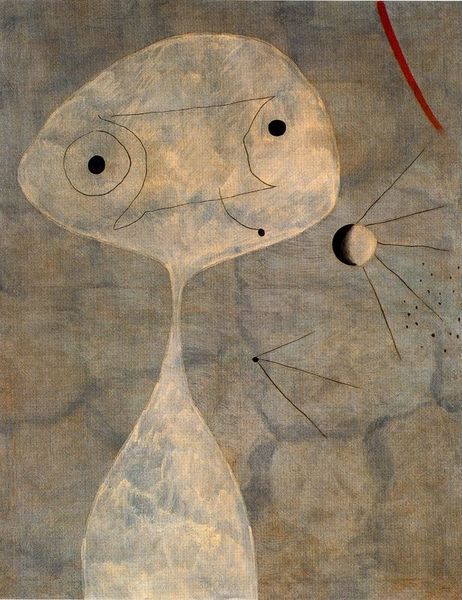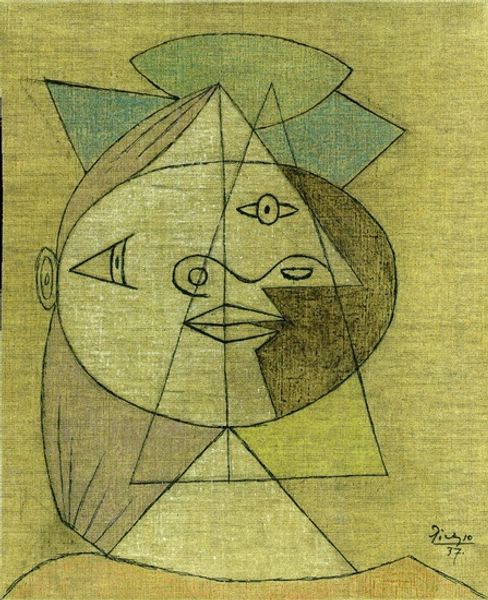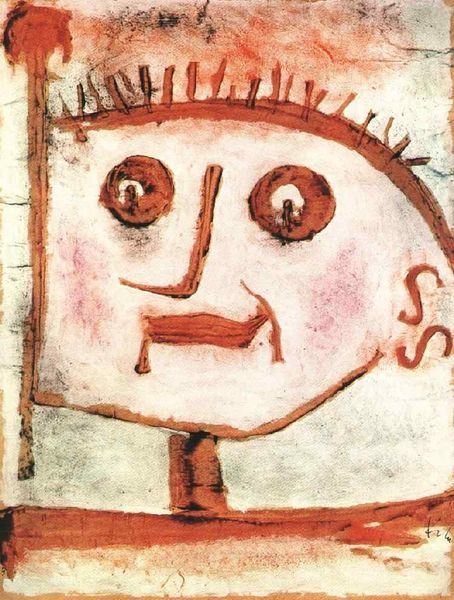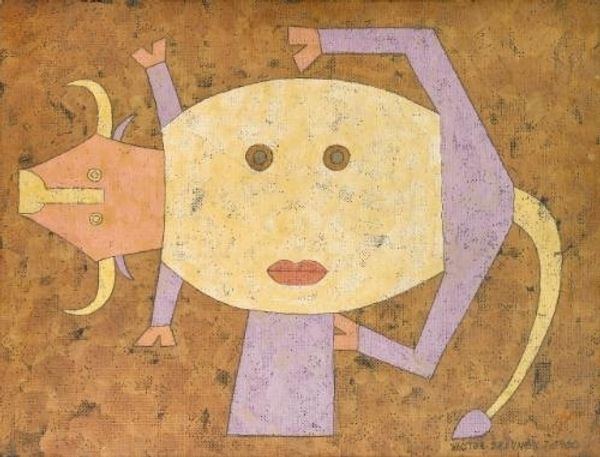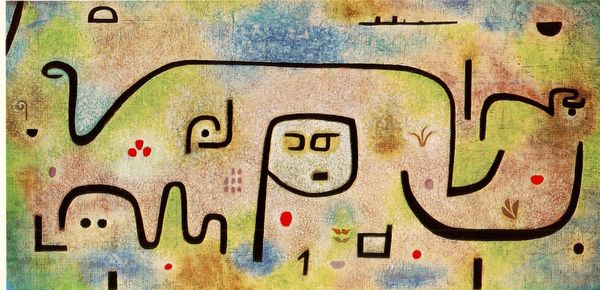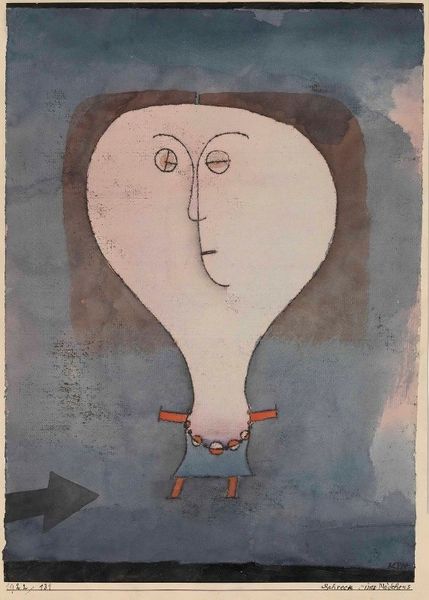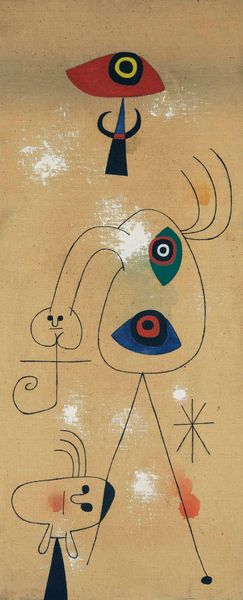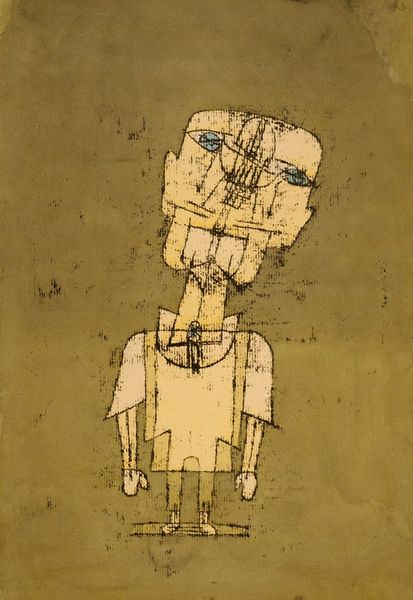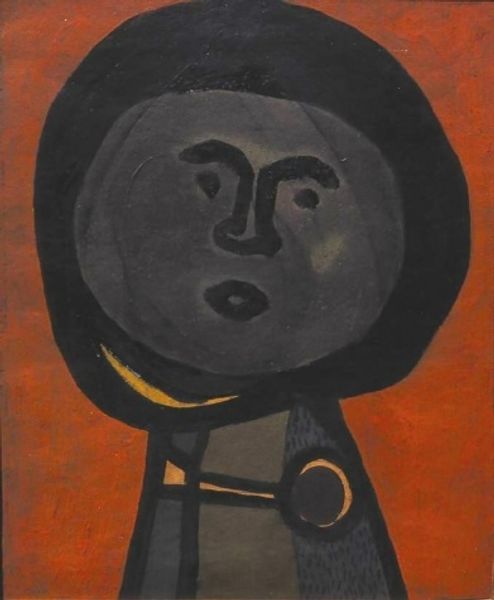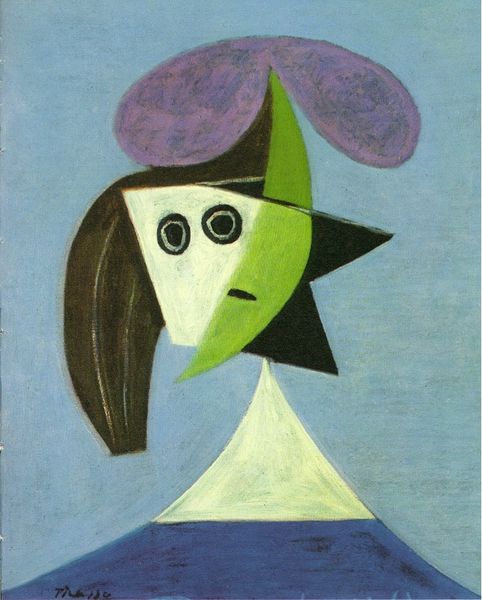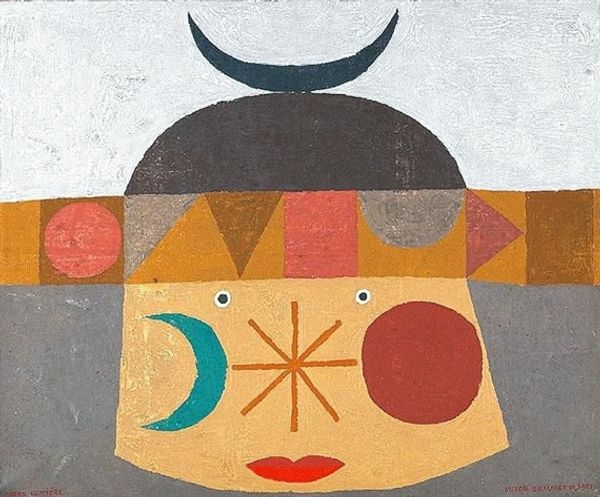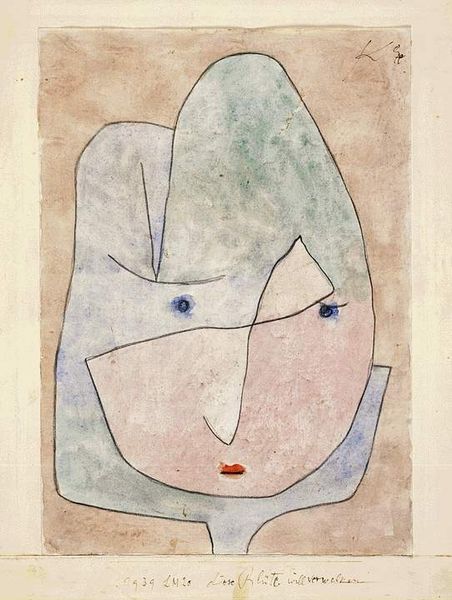
Copyright: Public domain
Editor: Here we have Paul Klee's "Error on Green," painted in 1939. It's a watercolor work featuring a peculiar, almost melancholic, face. There's this interesting interplay of geometric shapes and organic lines that creates such a unique texture. I’m curious, what jumps out at you when you look at it? Curator: I notice immediately the apparent simplicity of materials – watercolour on paper. But consider Klee's alchemical approach. He’s not just applying colour; he's building layers, manipulating the flow and absorbency of the water to create a sense of depth and texture with just those basic materials. Look how he controls the pigments in the green ground - the density varies quite a bit. What sort of labour is involved? Is it rapid? Or methodical? Editor: Methodical, I think. I see how the green kind of bleeds into the face, that wasn't an accident, right? Curator: Precisely. Think of Klee not as just depicting an "error," but embodying it through his artistic process. Is the "error" in the watery bloom of the watercolor or, perhaps, in the application? What tools were employed? He disrupts the notion of a flawless, mechanical execution, inviting a human element through his specific manipulation of materials, the subtle differences and variations speak volumes about Klee's approach to labour and material interaction, moving from 'fine art' toward "craft." Editor: So, it's less about the subject matter and more about how Klee himself interacted with the watercolour? How his method is itself saying something? Curator: Exactly. He embraces the inherent imperfections of the medium. It becomes a tangible record of the artistic process, revealing a material dialogue. He turns traditional artistic boundaries on their heads. We begin to appreciate how even a simple watercolor can become a profound meditation on material, method and making, thereby enriching how we "see" Klee's works in other media, such as ink. Editor: Wow, I’m definitely seeing the piece differently now. It’s like the material itself is telling the story. Curator: Precisely. Think of the material as a tool to dismantle the notion of preciousness associated with fine art and elevate our attention to process and practice of 'making' in itself.
Comments
No comments
Be the first to comment and join the conversation on the ultimate creative platform.
